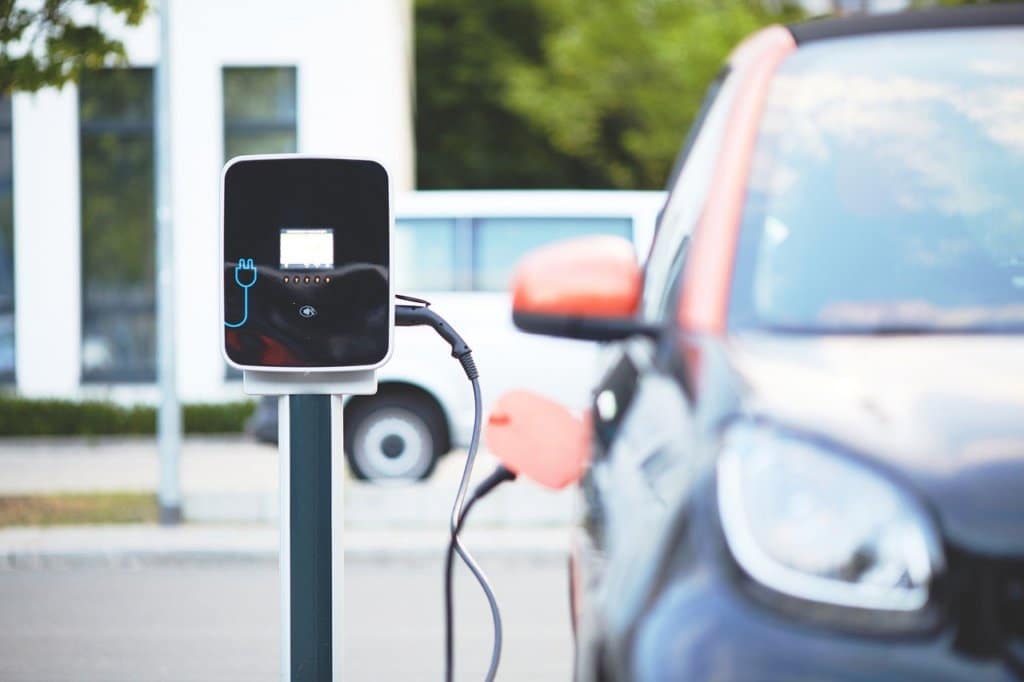What are the different types of plugs for recharging your electric vehicle?
Home recharging, the simplest solution
According to Averehe majority of recharges are carried out at home or at the workplaceand the rest at public charging stations. Most recharging of your electric vehicle will therefore take place at home. To do this, you have two options:
- Use a standard household socket with the charging cable supplied with your vehicle. (approx. 10 to 15 km ofrange recharged per hour)
- Install a charging station in the form of a wallbox or reinforced socket. For example, the Green'Up Access is a domestic socket designed for recharging electric vehicles (approx. 20 to 40 km of recharged range per hour).
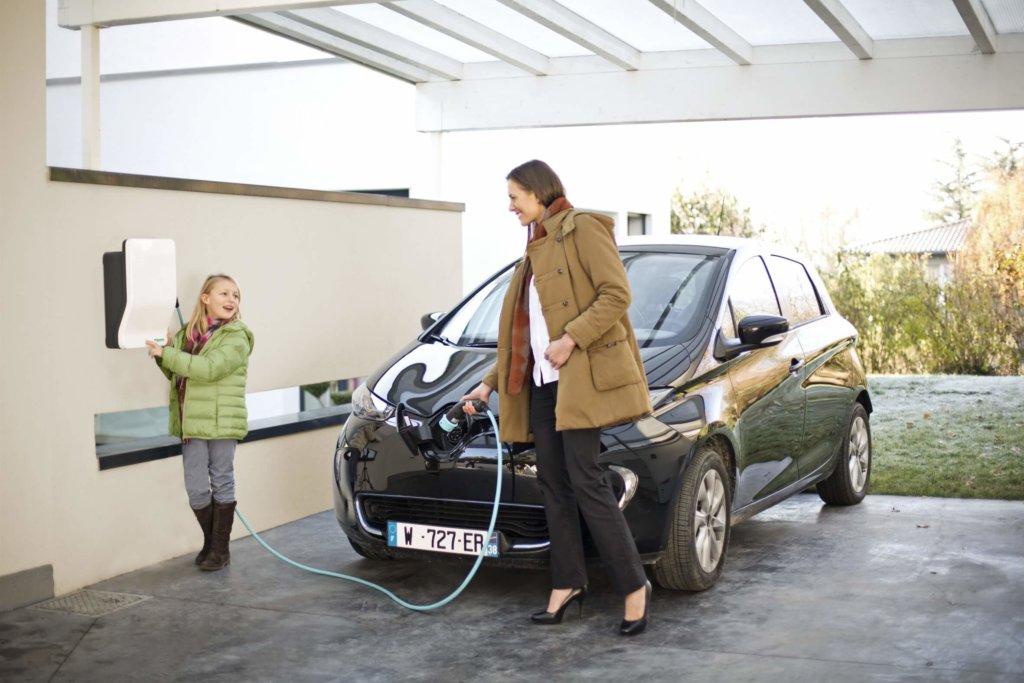
The wallbox
The wallbox is the most recommended for recharging your electric vehicle. It's a charging station for electric vehicles designed for domestic use. Its dedicated power line ensures faster, smarter recharging.
In fact, the domestic socket wasn't designed for recharging electric vehicles. The wallbox, on the other hand, has been designed to support the power needed to recharge regular and fast electric vehicles. As a result, you'll be able to recharge more than twice as fast with a wallbox.
The wallbox can also adapt to your electrical network. For example, in the event of peak consumption, typically in the morning. When you turn on the TV, coffee maker and toaster at the same time, the wallbox can adapt the vehicle's charging power to avoid tripping the electricity meter.
This is called load shedding. A wallbox can also be configured to charge the electric vehicle during off-peak hours, saving you money.
So it's with peace of mind that you plug in your vehicle at home in the evening, knowing that it will be 100% recharged the next morning for your day.
Recharging at public charging stations, with a growing network and high charging speed
There are two main categories of terminals:
- The terminals to which the cable is attached
- The charging points with which to bring your charging cable
According to a study commissioned by the French Direction générale des entreprises (DGE), du climat (DGEC), et l'Ademe, entitled "Analyse : Infrastructures de recharge pour véhicule électrique" (Analysis: Charging infrastructure for electric vehicles), the coverage and implementation of charging stations in France is still highly uneven and insufficient. However, the situation is improving with the government's determination to develop this sector and the arrival of new market players such as Fastned and IONITY.
There are essentially 3 types of socket on public terminals:
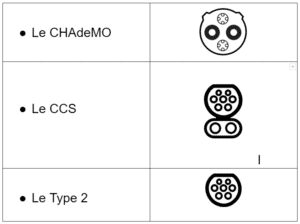
In Europe since 2017, a directive (2014/94/EU) stipulates that all fast-charging stations must be equipped with the CCS standard. This is the standard that has been chosen for the future of fast charging in Europe. A factor to take into account when reselling your future electric vehicle, which will influence its residual value.
Although today until 2024the majority of rapid charging stations in France are equipped with all three standards. It is estimated that CCS will become the prevailing standard in the next few years.
Networks such as IONITY have already decided to move away from CHAdeMO, deploying kiosks equipped only with CCS.
What are the different ways of recharging your electric vehicle?
Connecting the vehicle to the grid
When we talk about recharging modes, we need to understand how the electric vehicle is connected to the electrical grid, and how the electrical current reaches the vehicle.
The electric current exists in two different forms,
- Alternating current (AC)
- Direct current (DC) CURRENT
To put it simply, AC current is found in electrical outlets in the home, and DC current in batteries, so it's transformed, which determines recharging speed.
Alternating current (AC ) and direct current (DC)
Now for a little explanation:
Alternating current (AC) is easy to transport over long distances and perfect for domestic use. In your home, the current flowing to electrical outlets is alternating current.
Direct current (DC) is used to store energy in batteries. It powers everything from your smartphone to your electric toothbrush.
To transform AC current into DC current, we need to use a rectifier (or AC/DC converter)which we'll simply call a charger. All electric vehicles are equipped with a charger to transform AC mains current into DC current stored in the battery.
However, the more powerful the charger, the heavier and more expensive it is. Characteristics that don't lend themselves to use in an electric vehicle. Hence the importance of fast-charging stations, which are powerful chargers that can recharge your electric vehicle very quickly.
When using a fast-charging station, the current is not transformed in the vehicle, but in the station, then injected directly into the battery.
Fast charging allows you to recover several hundred kilometers of range in just a few minutes, opening the door to long-distance travel.
The 4 charging modes
There are 4 charging modes for electric vehicles. We've summarized how they work in these infographics. In all cases, when the electric vehicle is charging, the charging cable is locked into the vehicle's socket.
It's impossible to start it while it's still plugged in. The recharging mode defines how your vehicle is connected to the electrical grid for recharging, and will determine the speed at which your batteries recharge.
We won't deal with mode 1 because it's obsolete today, and doesn't meet electrical standards. An electric vehicle compatible with mode 4 will be compatible with mode 3, which will be compatible with mode 2.
Mode 2 (standard AC load)
Mode 2 involves plugging into a standard household socket, just as you would plug in your smartphone in the evening. The charging cable used is equipped with a system that regulates the charge. This means that this device ensures the safety of the connection by communicating with the electric vehicle and protecting the user from electrocution.
Today, all electric vehicles are delivered with a cable of this type when the vehicle is purchased. Using a reinforced electrical socket such as the Green'Up Access allows you to recharge your electric vehicle twice as fast.
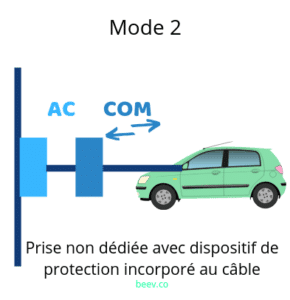
Mode 3 (intelligent AC charging)
Mode 3 is characterized by the use of a dedicated electrical circuit, i.e. a power line directly connected to the electricity meter. This is to avoid wear and tear on the home's electrical network in the event of regular charging. This type of installation is recommendedIt offers many advantages over mode 2.
Unlike mode 2, mode 3 enables intelligent vehicle charging. Typically, a wallbox or charging station, regulates power during charging to adapt to network constraints. In other words, power is adapted to the amount of energy available in the home in real time.
So there's no risk of a power cut while the electric vehicle is charging. This type of installation is very interesting because it also enables you to optimize your charging to take advantage of off-peak rates and thus save on your charge.
ALSO READ - When should you recharge your electric car?
A wallbox-type installation is an investment that must be factored into the purchase price of an electric vehicle. However, as with the ecological bonus, there are government subsidies for the installation of a charging station. A specific installation costs around €500 if it is not included with the vehicle.
ALSO READ Electric vehicle charging points in condominiums: the complete guide
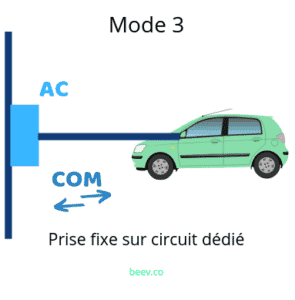
Mode 4 (DC fast charging)
Mode 4 is defined by direct current (DC) charging. Better known as "fast charging'. DC charging allows you to recover 80% of your range in less than 30 minutes. The exact recharging time depends on the vehicle, and the battery temperature (if extreme). Fast-charging stations are generally located in freeway service areas and large conurbations. Several networks are developing, such as Iziva, IONITYand Fastned
ALSO READ - How do you recharge your electric car on the freeway?
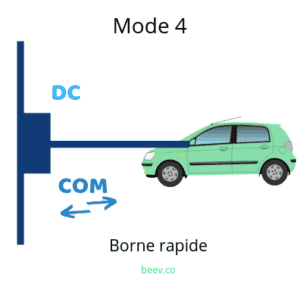
The different plugs for recharging your electric vehicle, the summary table
What are the latest requirements for Recharge standards?
With the rapid evolution of electric vehicles, recharging standards need to be regularly updated to guarantee the efficiency and safety of infrastructures. In 2024, several significant changes have been introduced:
- Charging stations must now be compatible with different networks to enable users to charge their vehicles without restriction, regardless of the supplier..
- Newly installed charging stations must have a minimum power rating of 22 kW for Type 2 connectors and allow high-power charging for Combo2 connectors.
- Operators must ensure ongoing maintenance of the terminals, and guarantee that recharging continues even if communication between the terminal and the supervision center is lost.
- Terminals must comply with strict safety standards, including devices to prevent overvoltage and guarantee load integrity.
If you would like to find out more aboutsupport for the installation of charging stations for private individuals in 2024please consult our article on the subject.
